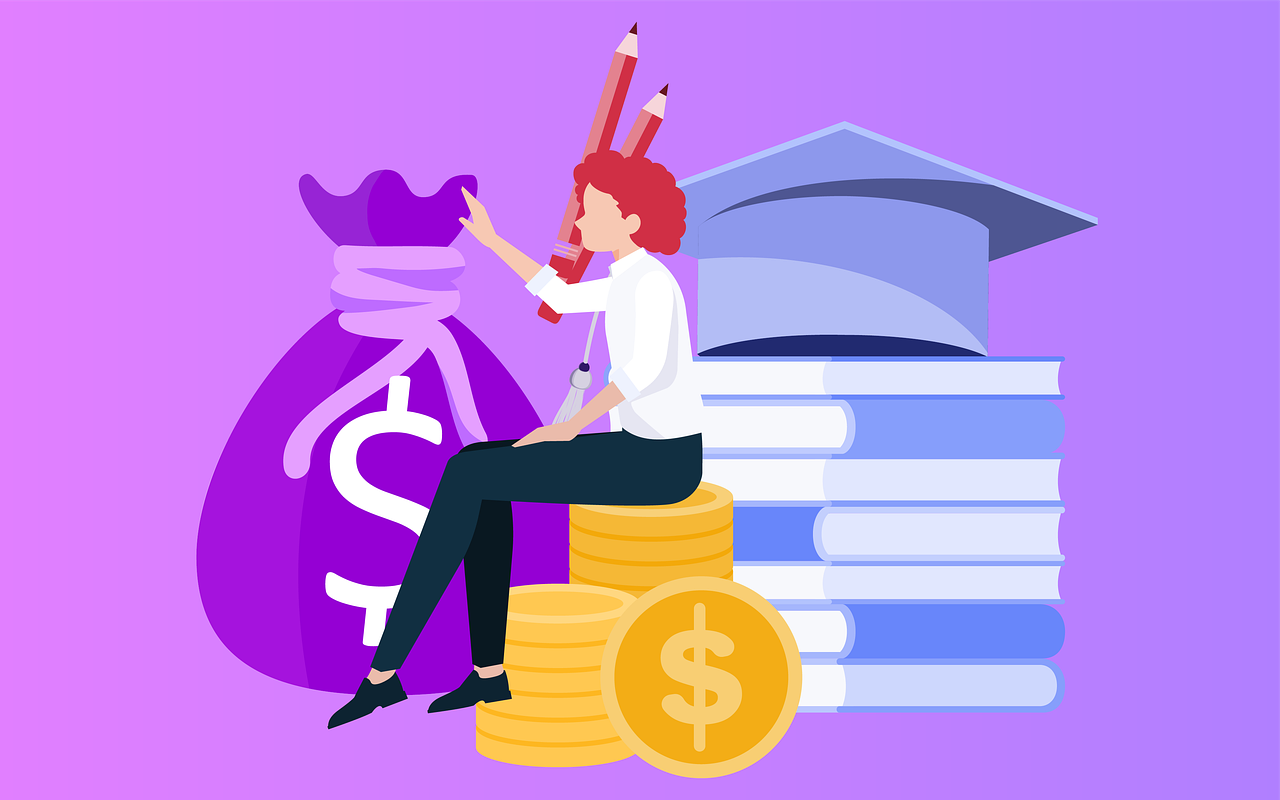Student loan debt is a massive issue in the United States. More than 44 million borrowers collectively owe more than $1.5 trillion in student loan debt. This problem needs to be addressed, and we hope this article will help educate borrowers about their options. We will discuss the different types of student loan debt and the repayment options available to borrowers. We also provide information on how to get help if you are struggling with your student loans.
The number of student loan debts in the U.S. is on the rise.
Most borrowers have between $25,000 and $50,000 outstanding in student loan debt. But more than 600,000 borrowers in the country are over $200,000 in student debt, which may continue to increase.
According to the student loan debt statistics, about 44.7 million Americans have outstanding student loan debt, totaling over $1.86tn, with 42.3 million Americans holding federal student loan debt. The U.S. Department of Education paused repayment, collections, and interest on federal student loans in response to the Covid-19 pandemic under Trump, with the final extension on the pause scheduled to expire on January 31, 2022.
There are a few things you can do to reduce your student loan debt. First, you should try to get scholarships and grants to help pay for school. Second, you should take advantage of student loan repayment plans. These repayment plans can help you lower your monthly payments and eventually get out of debt faster.
If you’re struggling with your student debt, don’t despair. There are options available to help you get out of debt and your life. With a little bit of research and effort, you can find a solution that works for you. Don’t let your student loan debt keep you from living your best life. Get started today and take control of your financial future.
What are the few reasons for this?
The cost of college has been increasing faster than the inflation rate for many years now. This means that more and more students are taking out loans to pay for their education. Additionally, many students cannot find jobs after graduation, making it challenging to repay their loans.
As a result, the number of student loan debtors in the U.S. is growing at an alarming rate. In fact, according to recent data from the Federal Reserve Bank of New York, the total amount of outstanding student loan debt in the U.S. has now reached a trillion!
What does this mean for borrowers? Well, it can mean higher monthly payments and more extended repayment periods. It can also make it challenging to qualify for other loans, such as a mortgage. So, if you’re thinking about taking out a student loan, be sure to consider all of the potential consequences before doing so.
The consequences of having student loan debts can be dire.
If you cannot make your payments, your credit score will suffer, and you could end up in collections. In addition, your student loan balance will increase every month, and the student loan debt outstanding will balloon overall.
Defaulting on your student loans can also lead to wage garnishment, which means the government can take a portion of your paycheck to repay your debt. In some cases, it can even result in losing your professional license.
If you’re struggling to repay your student loans, it’s essential to seek out help as soon as possible. There are several programs available that can assist you with making your payments or consolidating your debt. But, don’t wait until it’s too late to get help – act now and put yourself on the path to financial success.
What are the ways to deal with student loan debts?
The first step is to understand your loan. Know the interest rate, monthly payments, and repayment options. You can also consolidate your loans to get a lower interest rate. The second step is to make a budget and stick to it.
Decide how much you can afford to pay each month and make sure you pay on time. If you’re struggling, there are options available such as deferment or forbearance, that can help you temporarily lower or pause your payments. You can also refinance your loans to get a lower interest rate.
If you’re struggling with student loan debt, options are available to help you get back on track. By understanding your loan terms and making a budget, you can tackle your debt head-on.
Borrowers can also postpone private student loan payments via deferment or forbearance, but interest always accrues regardless of whether the borrower makes payments.
If you need more assistance, there are programs available that can lower your monthly payments or give you a pause from making payments altogether. And finally, if you’re struggling, you can always refinance your loans to get a lower interest rate. So no matter your situation, there’s hope for getting out of student loan debt.
Programs that can help you with your student loan debt.
Student loan borrowers in the U.S. have a lot of options when it comes to repayment assistance. The federal government offers several income-driven repayment plans and forgiveness programs for certain types of loans.
Private student loans
According to the U.S. Department of Education, student loan borrowers in the United States owe a collective $1.6 trillion in federal and private student loan debt as of March 31, 2021.
Several private companies offer student loan refinancing and consolidation services. These companies can often help you get a lower interest rate on your private student loans, saving you money over time.
Federal student loans
If you have federal student loans, you may be eligible for one of the income-driven repayment plans offered by the government. These plans can help make your monthly payments more affordable based on your income and family size.
You may also be eligible for loan forgiveness after making 120 qualifying monthly payments under an income-driven repayment plan.
If you’re struggling to repay your student loans, plenty of resources are available to help you get back on track. Talk to your lender or servicer about your options, and explore all the available assistance programs. With a little bit of research, you should be able to find a solution that works for you.
If you’re struggling with your student loans, don’t hesitate to reach out for help.
You’re not alone. In the United States, the average student loan debt is $29,000. But that’s just the average. The total amount of student loan debt in the U.S. is $1.8 trillion! That’s a lot of money, and it’s a lot of debt for borrowers to have to repay.
If you’re struggling to make your monthly payments or worried about defaulting on your loans, there are options available to you. You can contact your lender or servicer and ask about deferment or forbearance. You can also look into income-driven repayment plans. These plans can help make your monthly payments more affordable, based on your income and family size.
There are also loan forgiveness programs available for certain types of loans. For example, if you have federal student loans, you may be eligible for the Public Service Loan Forgiveness program. This program forgives the remaining balance on your loan if you make 120 qualifying monthly payments while working full-time for a qualifying employer.
Most student loan debt is good debt.
It’s important to remember that, while student loan debt can be a burden, it’s also an investment in your future. A college degree can lead to higher earnings and more job opportunities throughout your career. So, while you may not enjoy making those monthly payments, know that they’re helping you achieve your long-term goals.
If you’re struggling with your student loan debt, options are available to help you get back on track. Don’t be afraid to reach out for assistance. There are many resources available, and with a little bit of research, you should be able to find a solution that works for you.
In conclusion
The total student loan debt is still increasing. However, there are many options available to help you repay your loans. You can refinance your loans, apply for income-driven repayment plans, or look into loan forgiveness programs. If you’re struggling with your student loan debt, don’t hesitate to reach out for help. You’re not alone!
Please feel free to contact us at Edfed if you have any questions about your student loan debt. We offer a Student Loan program to help borrowers get back on track.















